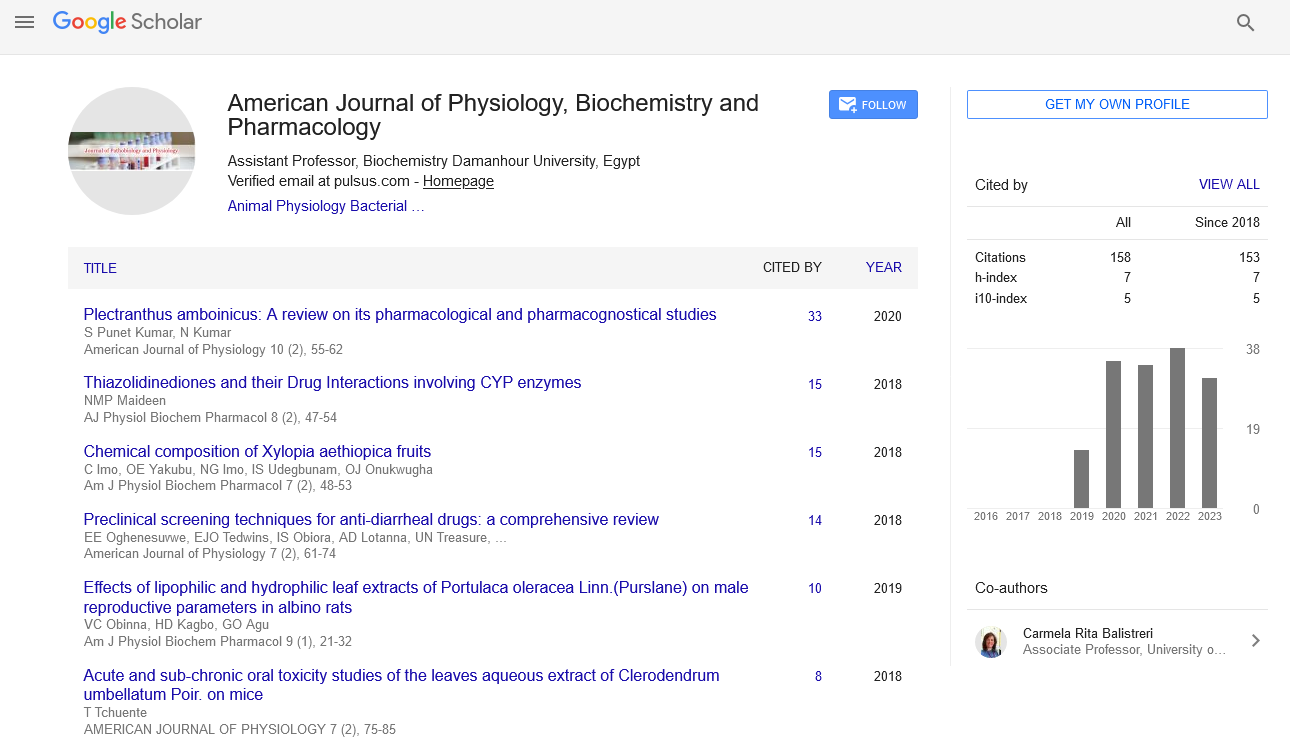Commentary - American Journal of Physiology, Biochemistry and Pharmacology (2022)
Significance of Safety Pharmacology and its Types
Jian Zheng*Jian Zheng, Department of Pharmacology, University of California, Santa Cruz, United States, Email: jian@gmail.com
Received: 07-Nov-2022, Manuscript No. AJPBP-22-81952; Editor assigned: 10-Nov-2022, Pre QC No. AJPBP-22-81952 (PQ); Reviewed: 24-Nov-2022, QC No. AJPBP-22-81952; Revised: 29-Nov-2022, Manuscript No. AJPBP-22-81952 (R); Published: 09-Dec-2022
Description
Pharmacology is a subfield of medicine, biology, and pharmaceutical sciences that studies how drugs or medications work. A drug is any synthetic, endogenous, or natural molecule that affects a cell, tissue, organ, or organism in a biochemical or physiological way. More specifically, it is the study of how interactions between a living thing and chemicals that impact whether by biochemical activity is normal or pathological. Pharmaceuticals are chemicals that have therapeutic qualities. The study of potential adverse pharmacodynamic effects of Novel Chemical Entities (NCEs) on physiological processes in relation to exposure in therapeutic range and focus of the pharmacological discipline is known as safety pharmacology. Research on the potential adverse pharmacodynamic effects of a chemical on physiological processes in relation to exposure in the therapeutic range and above is known as safety pharmacology. The goal of safety pharmacology is to describe the PK/PD connection of a drug’s side that effects by using a constantly developing technique. Safety pharmacology has a regulatory mandate to foresee the possibility of rare fatal events. Prior to human exposure, safety pharmacology investigations must be undertaken, and other papers provide regulatory guidelines.
The goals of safety pharmacology research are to 1) Uncover unfavourable pharmacodynamic traits of a chemical that might be relevant to its safety in human; 2) Assess unfavourable pharmacodynamic and Safety pharmacology is divided into primary organ System and Secondary organ System. Primary organ systems are consists of Central Nervous System, Cardiovascular System, and Respiratory System.
Central Nervous System is the brain and spinal cord make up the central nervous system. The brain directs our thoughts, memories, movements, and emotions. Between the brain and the nerves that run throughout the body, by the spinal cord relays messages. Cardiovascular System all of the body’s cells receive nutrition and oxygen through the cardiovascular system, which circulates blood. It is made up of the blood veins that run throughout the body and the heart. Blood is transported from the heart via the arteries and returned by the veins. Respiratory System is the network of organs and tissues that aids in breathing is known as the respiratory system. It consists of the blood vessels, lungs, and airways. The respiratory system also includes the muscles that propel your lungs. Together, these components help the body circulate oxygen and eliminate waste gases like carbon dioxide.
Secondary organ system is consists of Gastrointestinal system and Renal system. Gastrointestinal System is the mouth, pharynx (throat), oesophagus, stomach, small intestine, large intestine, rectum, and anus are all parts of the gastrointestinal system. Salivary glands, the liver, gallbladder, and the pancreas are also included since they produce digestive juices and enzymes that aid the body in breaking down food and liquids. Renal System is the kidney, ureters, and urethra make up the renal system. The system as a whole filters about 200 litres of fluid each day from renal blood flow, enabling the excretion of toxins, metabolic waste products, and excess ions while maintaining the blood’s necessary components.
Safety pharmacology is concerned with the safety margin for a new drug that nature of the dose-limiting adverse event, the therapeutic indication, and the intended patient population, whether the toxicity is reversible, has a biomarker, and its mechanism, whether it is intended for a specific patient population.
Copyright: © 2022 The Authors. This is an open access article under the terms of the Creative Commons Attribution NonCommercial ShareAlike 4.0 (https://creativecommons.org/licenses/by-nc-sa/4.0/). This is an open access article distributed under the terms of the Creative Commons Attribution License, which permits unrestricted use, distribution, and reproduction in any medium, provided the original work is properly cited.






